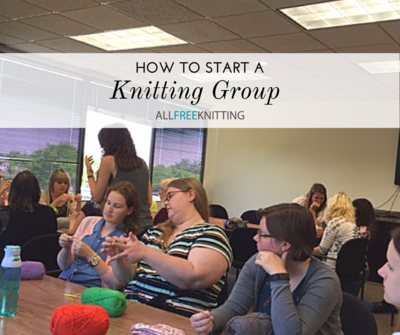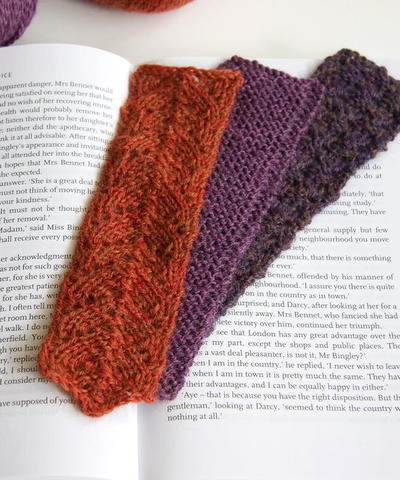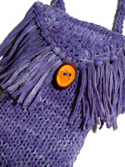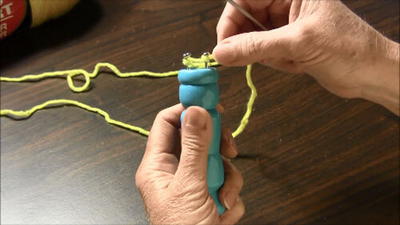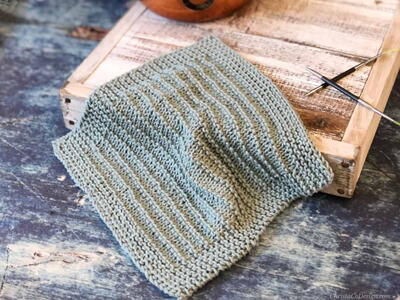How to Start a Knitting Group
Learn step-by-step how to lure other knitters out of hiding and get a club together!
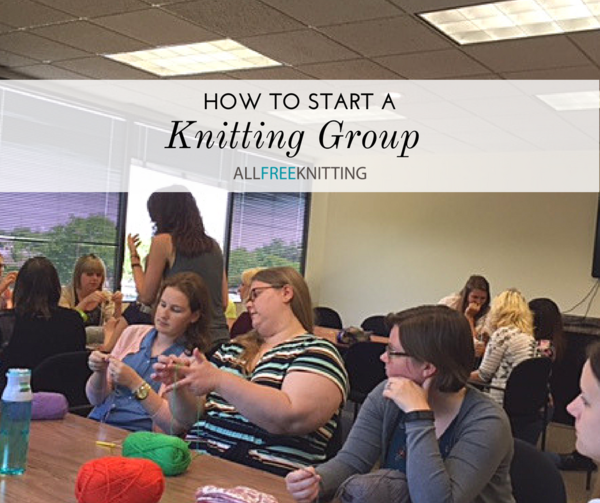
In 2016, I started a knitting and crocheting group with a coworker of mine at my office. Every Thursday, five of us scarf down our food before lunch time and spend our break in a haze of clanking needles, pulling hooks, conversations crossing all kinds of boundaries, and a lot of laughter. Activity here isn't limited to just the fiber arts; sometimes, we'll shake things up and work on adult coloring pages, beading crafts, and all other kinds of creative projects (one of our regular members doesn't even craft, but spends his time working on his literary magazine)!
This might not work for everyone, but we've gotten into quite the groove over the last couple of years. I can confidently say that all five of us really look forward to what we've dubbed "Stitch Circle" every week, and it always feels like something is missing when one or more of us can't attend. Ultimately, therein lies the point of starting a knitting group: fostering a sense of community and building friendships by sharing in your passions with those around you.
After how much joy Stitch Circle has brought me, I'd be remiss to not encourage every knitting fiend out there to get out and start their own group, if there doesn't already exist one in your area to join (or you're just looking to start fresh). Here are some easy steps to follow to learn how to start a knitting group of your very own.
If you're looking to start a knitting group, you probably want to learn everything there is to know about knitting! For an amazing collection of tutorials and guides that you can share with your group, check out ourKnitting Resources
Step 1: Envision Your Group
Your knitting club will look very different depending on your living situation, your community, and your skill level. Before you even begin to enlist other club members, it's important to assess your situation and come up with a rough idea of what you want your knitting group to look like. Here are some things to consider:
-
Demographics - Do you want your members to all be from the same town and around the same age, or are you open to people from all walks of life in your group? No matter what kind of "knitting family" you envision yourself having, it's important to keep an open mind. You may not think that fifteen year-old knows anything about knitting, but she could have been knitting since childhood and may be a valuable member of your group. You may want to be able to have "girl talk" during group meetings, but who's to say that male knitters wouldn't be fun to gossip with, too?
-
Activities - Is it important to you that the club is a knitting-only space, or are you willing to open it up to different yarn activities, such as crocheting or rug-hooking? Would you take it a step further and open up the group to crafting of all kinds, as long as the central focus is knitting? If your heart is set on your group focusing on knitting only, that is valid, but you're less likely to get a big, bustling group together because you're barring off a lot of other crafty folk.
-
Social settings - Do you go to school, and envision your group as an after-school club? Do you live in a retirement home where all of your members live in the same general vicinity? Are you a busy professional who'd ideally like to hold your group during your break in the workday so you can keep your evenings open for family and other obligations? Being a member of an educational, working, or living community can make it easier to get a group of like-minded individuals together, but it's important to remember that you're also limiting your potential group members this way.

Stitch Circle, my knitting group, is full of young professionals with a passion for all kinds of crafts, but especially yarn-related ones. What will your group look like?
Step 2: Choose Your Knitting Club Name
This is the fun part. For my knitting group at work, we settled on "Stitch Circle;" it just sort of rolled off the tongue and, hey, we all sit in a circle, so it just made sense! We also didn't want to discourage stitchers of other flavors, such as crocheters and cross stitchers, away from the group.
If you're a little more bold, try to get creative! There are so many puns you can create with the words "knit," "stitch," "purl," etc., including ones which you typically wouldn't say aloud in polite company (remember your demographics)! A simple Google search for "knitting puns" will give you an array of ideas. You're not limited to puns or anything funny, clever, or creative, either. Sometimes, simpler is better. It's easier to remember (and to name-drop!) knitting club names that are a little more classic and easily identifiable, such as a simple "Knitting Club," "Yarn Club," or "Sunday Night Stitches."
It's okay to not know yet what you want to call your club. If you have a friend or two who has already shown some interest, enlist his or her help with coming up with a club name! You can even ask your non-knitterly friends and family, and repay them for the help with a cozy knit scarf.
Step 3: Find a Venue
This will either be the easiest or the hardest of all the technical details. If you have a home and you live alone, or have family members who don't mind their house being host to regular knitting meetings, you can always offer up a room in your own home for knitters to gather 'round.
If that isn't an option, or you or whoever else you may be starting the group up with would prefer to not inconvenience the rest of the family, things will get a little more difficult. Some options include:
-
Your local yarn or craft stores - Many yarn stores will set up tables specifically for people to sit down and knit together, but talk to the owner or manager to see what they allow in terms of group meetings. They may have another group already with exclusive rights to the space. If that's the case, don't be blue—maybe you just want to join that group!
-
Your community center or community college - It's not uncommon for these kinds of places to have rooms you can rent out on a weekly or monthly basis for free. Contact the school or center and ask who you need to talk to about getting a space reserved. Be sure to explain your vision of the group; when people imagine "knitting clubs" they don't exactly imagine rowdy and destructive people, so use that stereotype to your advantage!
-
A park - If you live in a temperate area with easy weather year-round, there's nothing wrong with meeting in the good old-fashioned great outdoors to give yourself your weekly dose of fresh air.
No matter where you choose to hold your meetings, make sure it's consistent. Sometimes, things just happen and you have to cancel or move a meeting every now and again. However, it only spells disaster to have to move your meeting around most or every week. This leaves more room for miscommunication, and you're more likely to frustrate and upset your members if they can never find where you're meeting!
Step 4: Set Regular Meeting Times
Another great way to keep people coming back is to make the meeting times regular and consistent. Whether you choose to meet weekly, every other week, or even just once a month, make sure that it's always not only at the same place, but at the same time. Keep in mind your group demographics; if your group will be all retirees with no job or daytime obligations to speak of, the middle of the day on a weekday is a viable option. However, if you have working professionals or students attending your meetings, this is less ideal, and you'll want to choose an evening meeting time during the week, or sometime during the day on a weekend.
You can always start with an initial meeting time and then get a poll from your attendees of what times work best from them, and go from there.
Step 6: Enlist Some Fiber-Loving Friends
The best way to seed your group is with people you already know and love who enjoy knitting. If you're lucky enough to have even one fiber-inclined friend, ask him or her to start the club up with you. Two heads are better than one, and they might even know some other people who enjoy knitting. Then those people may know some other knitters, and before you know it, you'll have a decent-sized group of yarn lovers!
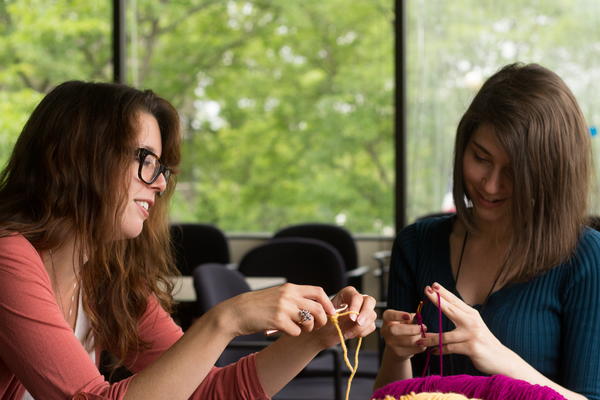
Say hello to Dana (on the left) and myself (right)! Together, we co-founded Stitch Circle. It's much easier to get a knitting group together with at least one friend. This is her teaching me how to crochet!
Step 6: Advertise
When you can't get enough members just through word-of-mouth, there are other ways to pull people into your knitting club from the outside. Put together a neat little flyer, for starters, and print out a few copies to post at your local yarn store, craft store, or community center. Be sure to state clearly where you'll meet, what time you'll meet, and the club's intention (to knit together)! Additionally, be sure to provide contact information of yourself or whoever you've appointed to be the club's leader or president so people can get in touch with you if they have any questions.
Another resource that's just waiting to be tapped is the online knitting community. Peruse your favorite knitting Facebook groups (such as the AllFreeKnitting community) or forums, and make a post asking if anyone in your area is interested in meeting weekly to knit together. Give the same details you would give in a flyer, and be sure to answer everyone promptly and respectfully. You'd be surprised how many people would love to join a knitting group, but don't know how to start one on their own!
A final piece of advice: be inclusive. Try not to use gendered terms or insulting rhetoric in your advertisement. You may get some laughs and smiles out of a greeting like "Hello, ladies!", but that kind of language might make male knitters feel unwelcome. Additionally, language such as "NO BEGINNERS ALLOWED!" might make for a more tight-knit (pun intended) community of advanced stitchers, but don't you think you're discouraging beginners from stepping forward and trying to learn with that kind of exclusive language? Try to make people feel welcome, even if you had a specific demographic in mind. As I've mentioned, you may begin to love having that plucky teenager in your group of stitching grandmothers! Variety is the spice of life, and the more diverse your knitter friends are, the more likely they are to help you escape a knitting rut with the unique perspectives they can bring to the table.
Step 7: Bring Some Extra Yarn and Needles
Every time you meet, plan to bring some extra yarn and needles to your venue. You never know who may show up and realize they forgot their WIP at home! On the other end of the spectrum, a random person may very well show up with an eagerness and willingness to learn to knit, but doesn't have any of the materials, yet. They're likely to feel right at home and well taken-care of if the materials are right there for them to get their feet wet (as well as a patient instructor and friendly group)!
Step 8: Plan Possible Future Group Activities
You're going to want to start off your group as a general place for knitters to get together and work on their individual projects together, but as you get a feel for your members' skill levels and interests, you can start planning fun activities together! These can include, but are not limited to, trips to your local yarn store, knit alongs from your favorite designers (or a pattern you've designed yourself), charity drives, and group lessons to teach each other new techniques. When you keep things interesting (and optional—this is important), people are less likely to drop off like flies and keep coming back for more fun. The knitting group that does activities together stays together!
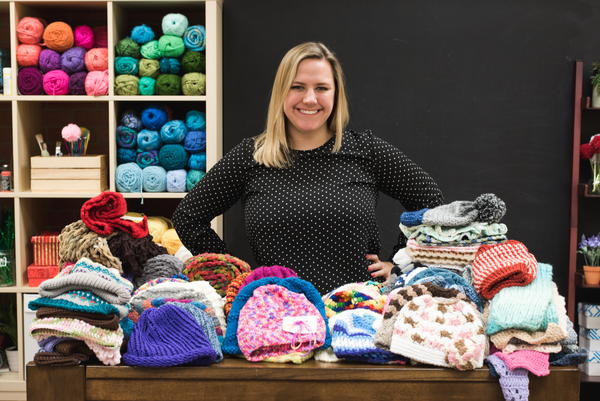
At Prime Publishing, we're always looking for ways to give back. Try collecting hats, shawls, or mittens for charity at your knitting club!
Read NextEasy Dishcloth
Your Recently Viewed Projects
EditorLP
Aug 14, 2018
I was lucky enough to stumble upon my office's Stitch Circle, and it is now an hour I look forward to every week! I never would have thought of starting my own knitting or crafting club, but I am so glad to be a part of one. Having a go-to group of crafty minded friends is such a treat!
Report Inappropriate Comment
Are you sure you would like to report this comment? It will be flagged for our moderators to take action.
Thank you for taking the time to improve the content on our site.



